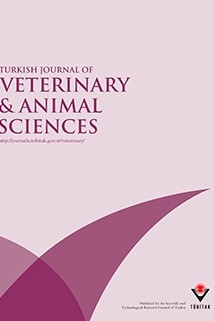
Turkish Journal of Veterinary and Animal Sciences
Yazarlar: Trina Jorre De St JORRE, Penny Alison Rhian HAWKEN, Graeme Bruce MARTIN
Konular:-
DOI:10.3906/vet-1404-81
Anahtar Kelimeler:Male effect,Sheep,Goat,Behaviour,Industry,Pheromone
Özet: In female sheep and goats, exposure to males can be used to induce ovulation and thus control and synchronise fertility. This 'male effect' offers simple, cost-effective, and hormone-free management of reproduction in flocks and herds but, despite decades of research, significant gaps in our knowledge impede commercial application. Many of these gaps can be traced back to misconceptions in the early documentation of the male effect, and others are the result of uncontrolled factors in experimental design. Consequently, it is often difficult to draw conclusions from past research, to further our understanding of the phenomenon, and to make recommendations for industry application. Here, we describe 2 aspects of the male stimulus used to elicit the male effect that are often uncontrolled - the novelty of the stimulus males and factors that contribute to variability in the potency of the male stimulus. We discuss the physiology that underpins novelty, including the individual specificity of the sociosexual signals emitted by the male, and the concomitant ability of females to distinguish among individual males and remember them. Importantly, an understanding of the issue of novelty can make it easier to use the male effect in commercial practice. We also discuss difficulties in interpretation caused by variation in endpoints of the male effect (from neuroendocrine reaction to birth). We conclude that more rigour is needed in the control and reporting of male novelty, in preexperimentation separation of the sexes, and in extrapolation from detection of early responses to the male stimulus to reproductive outcomes.